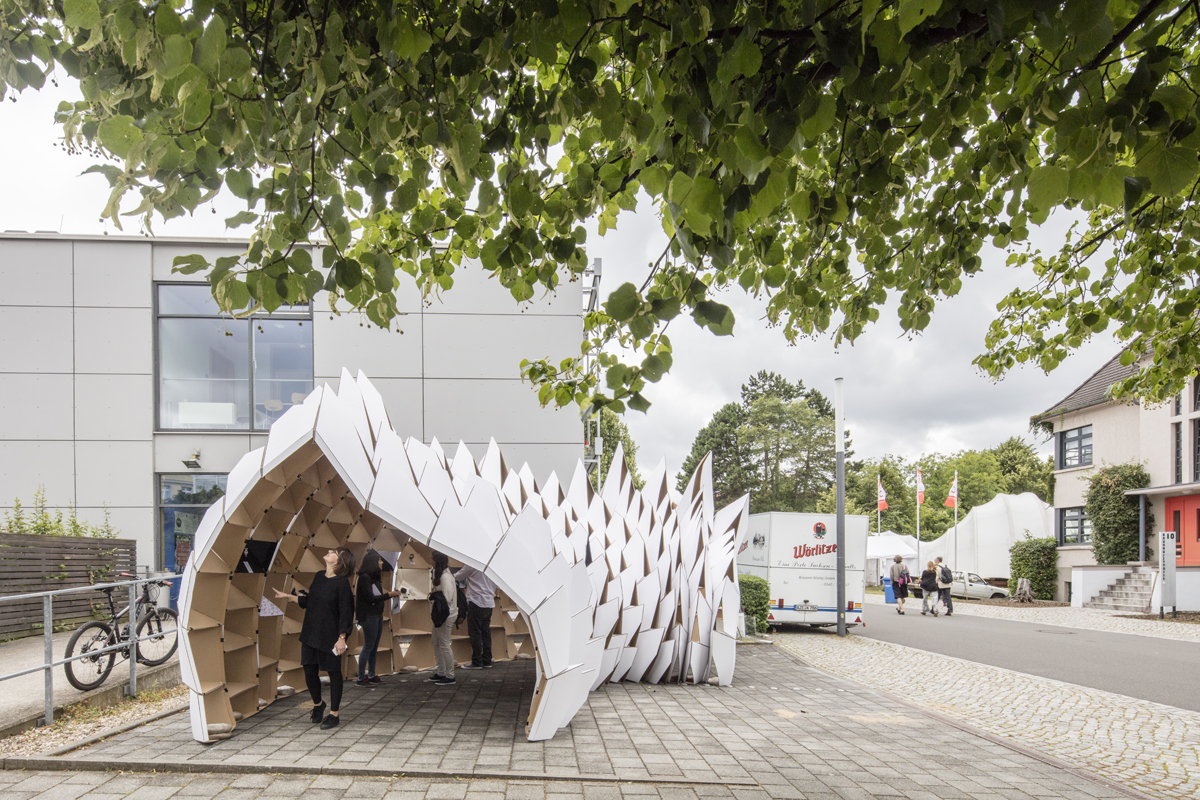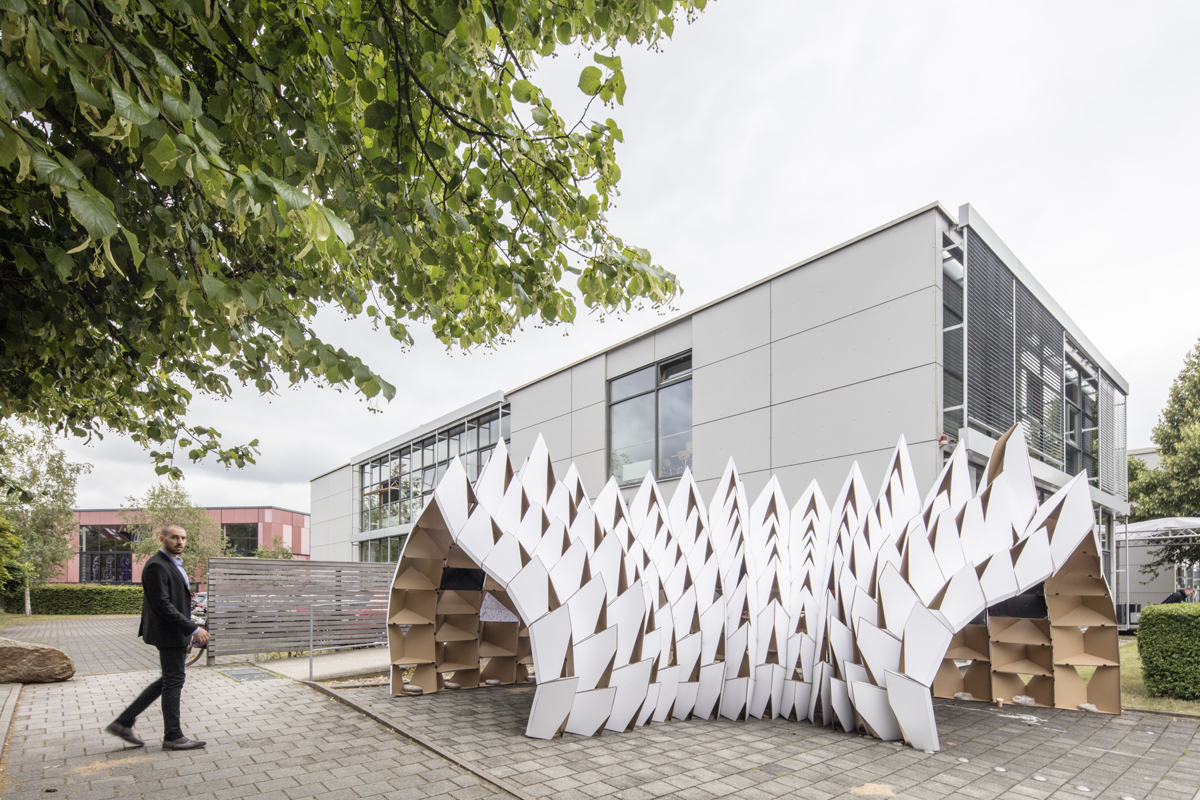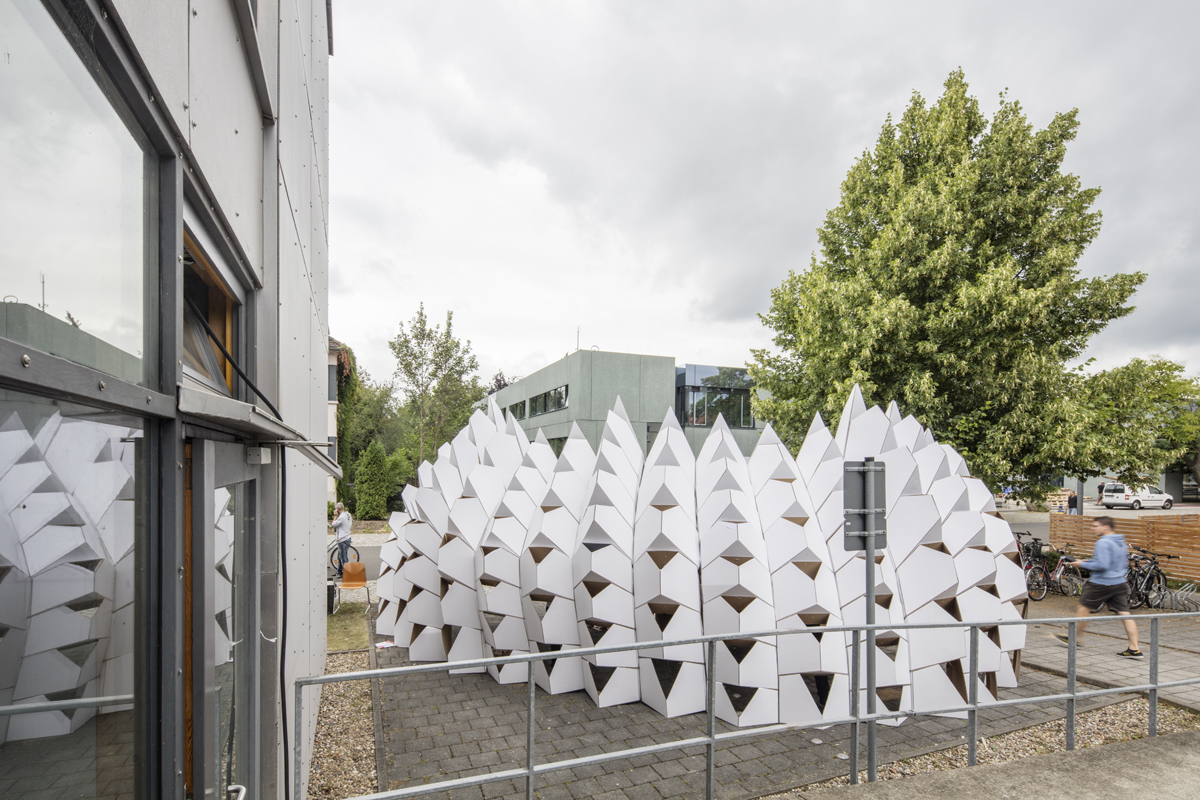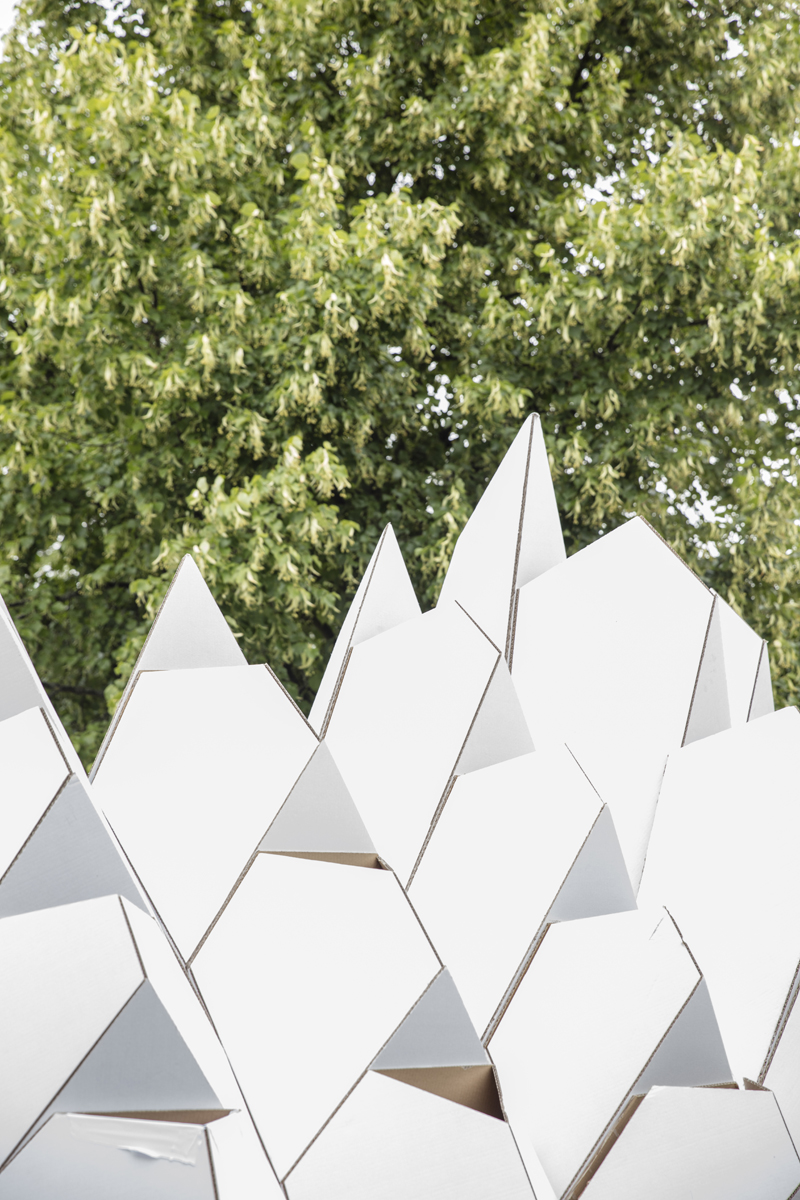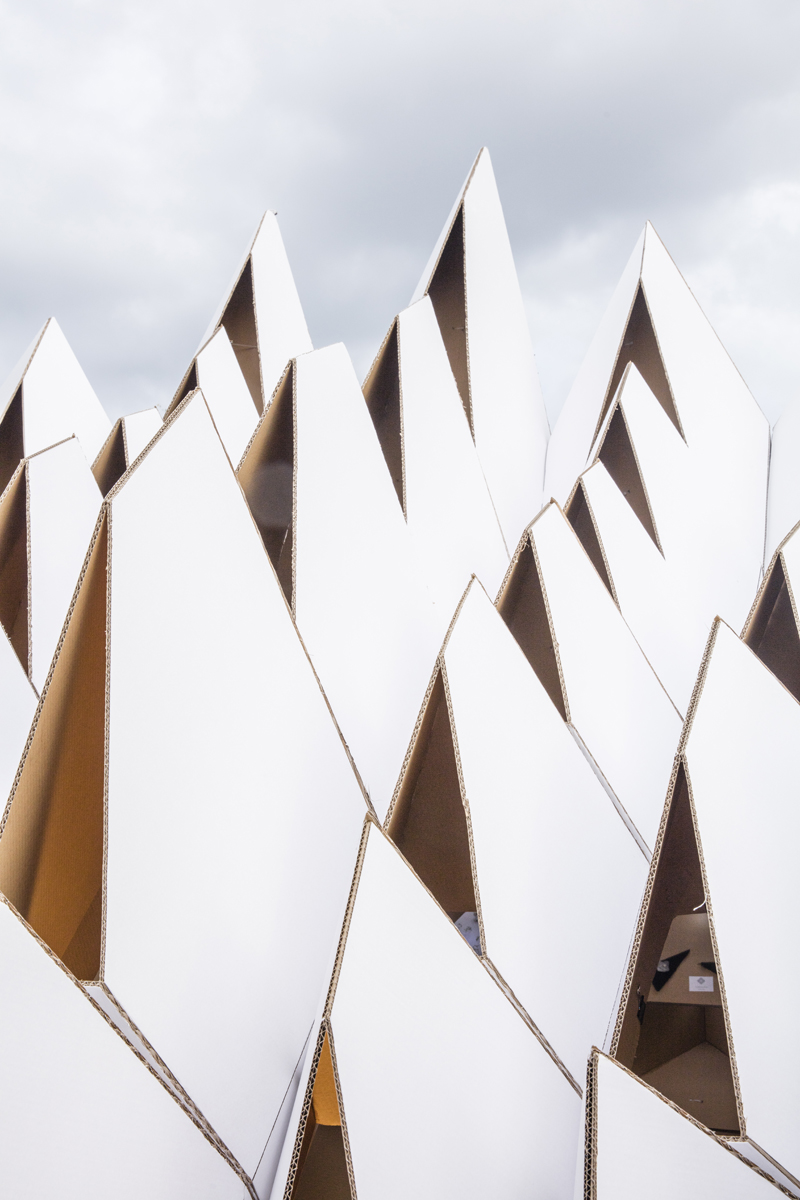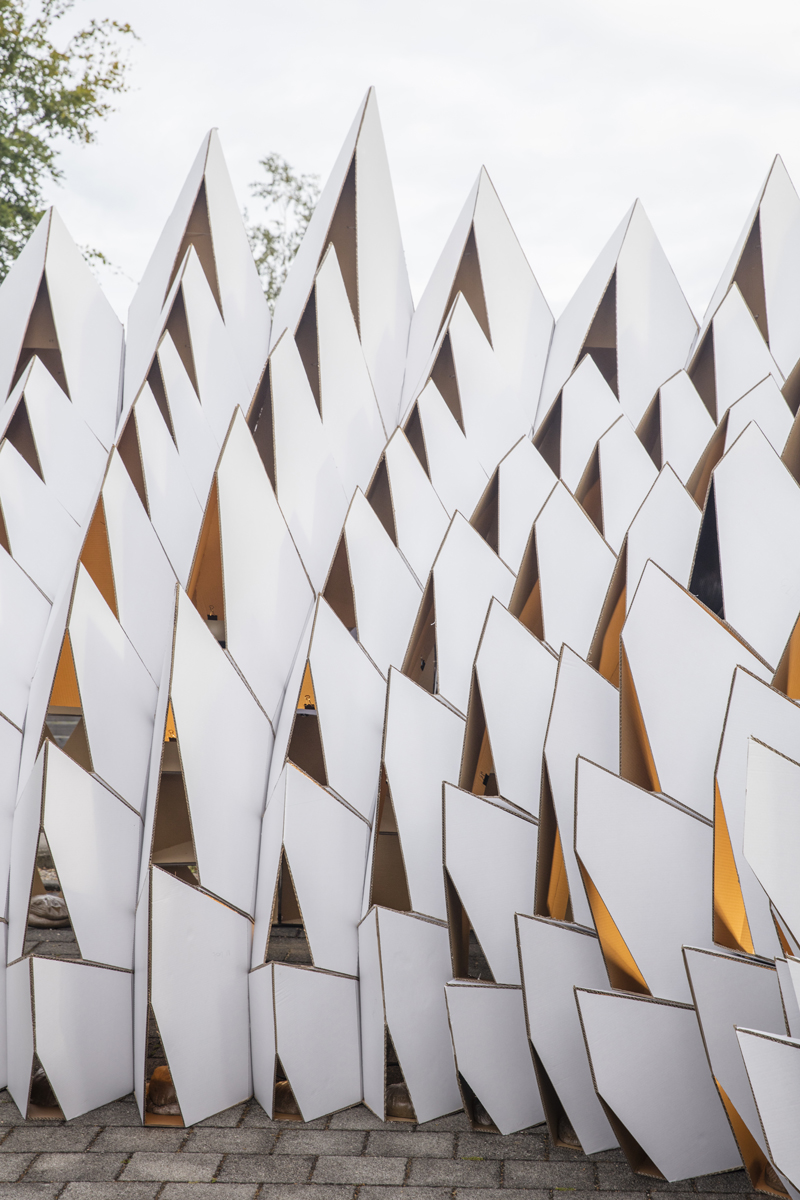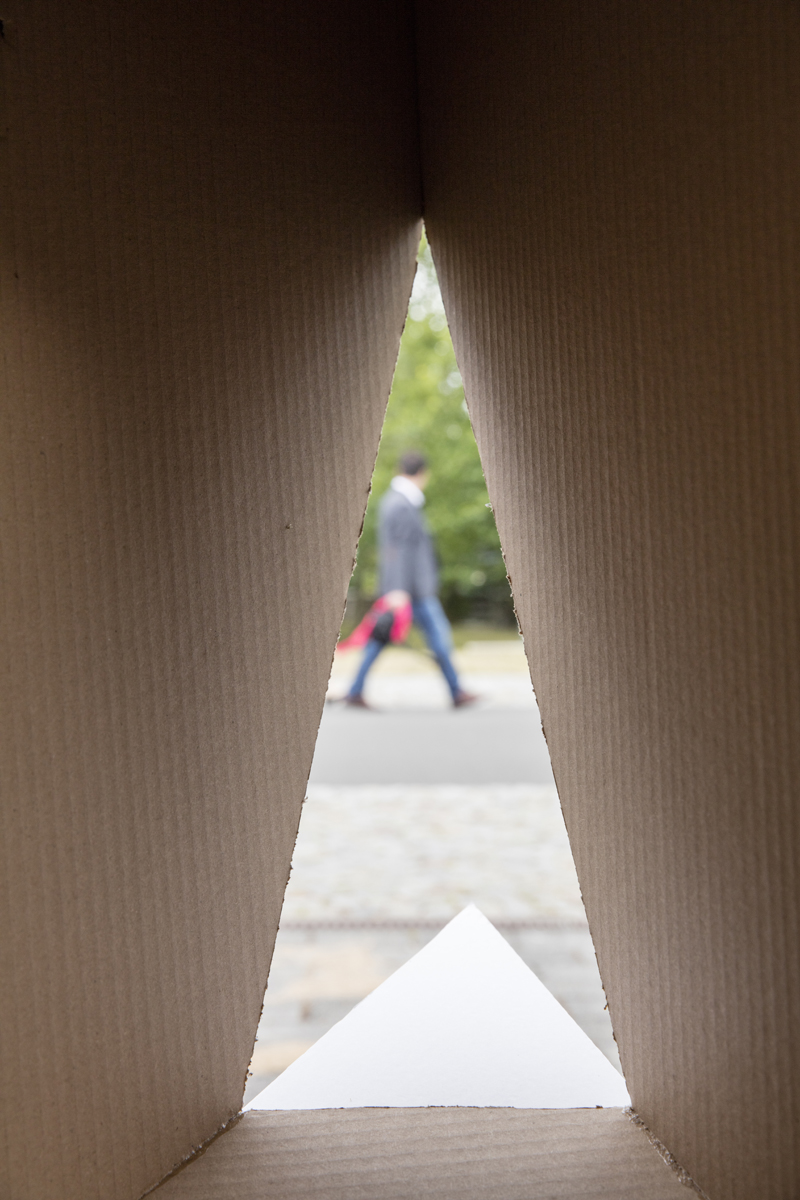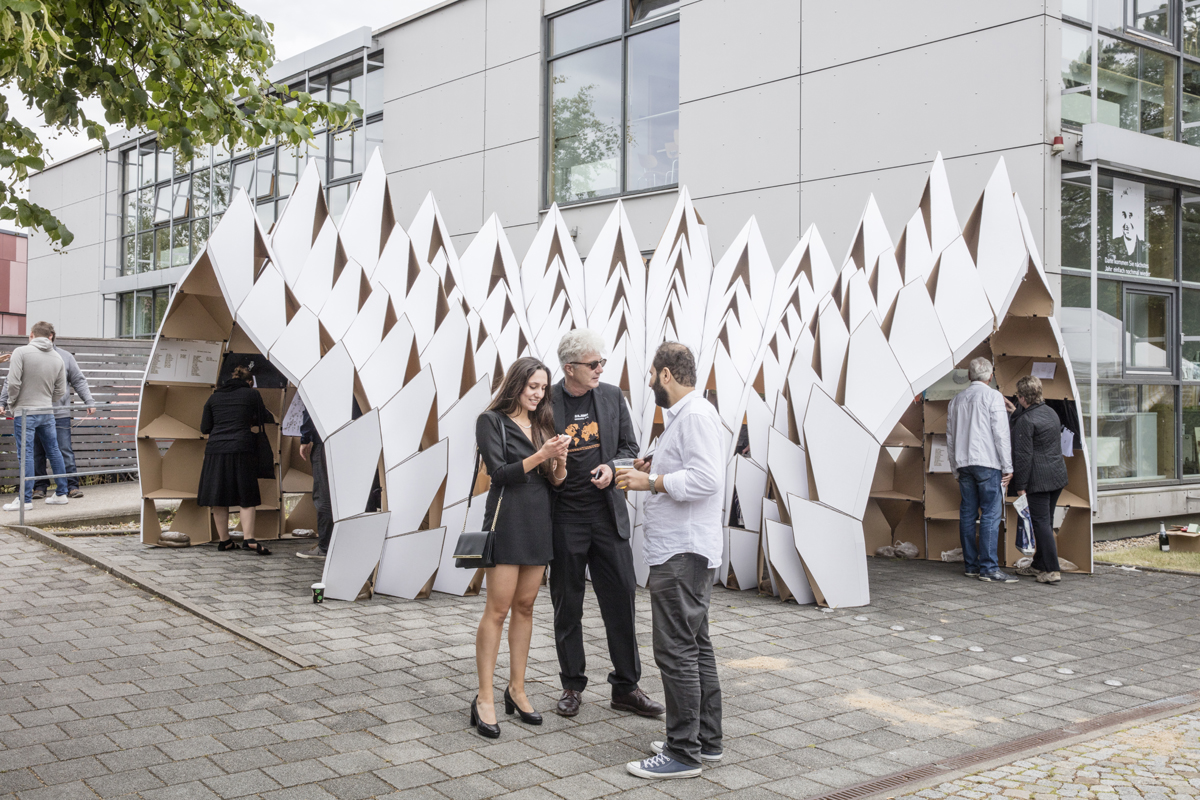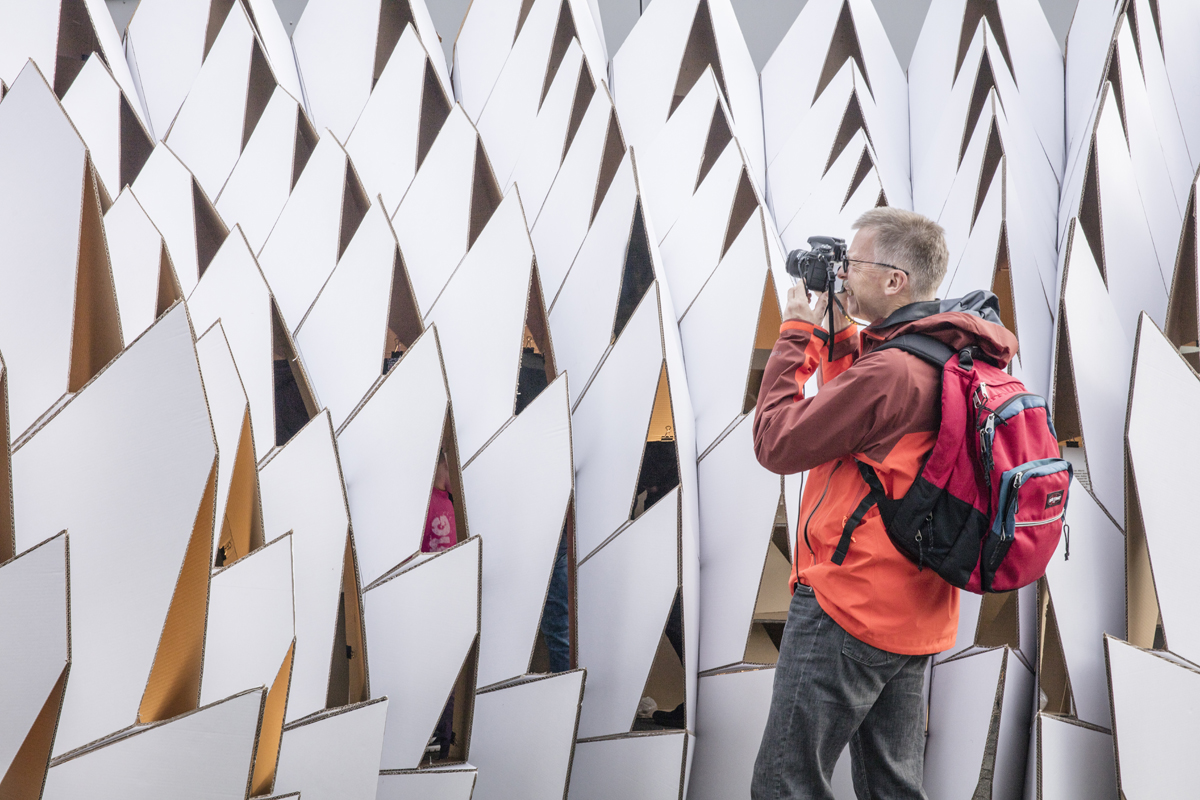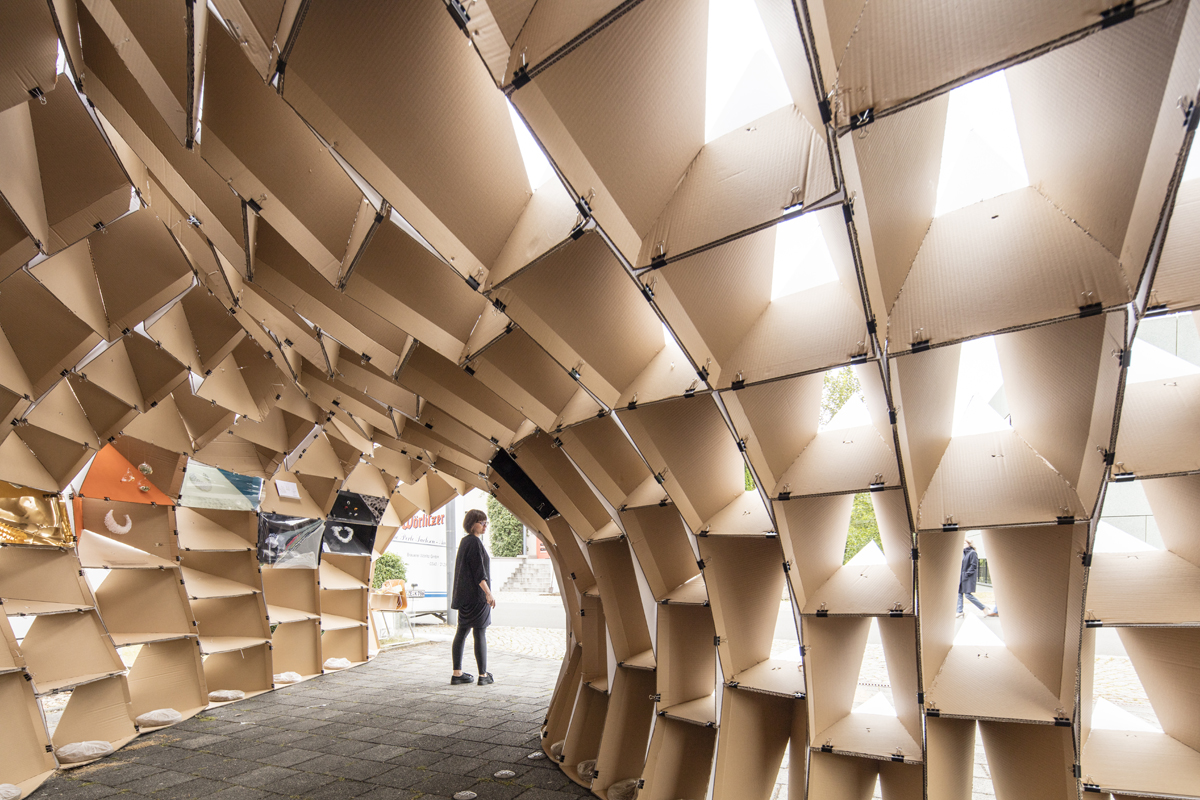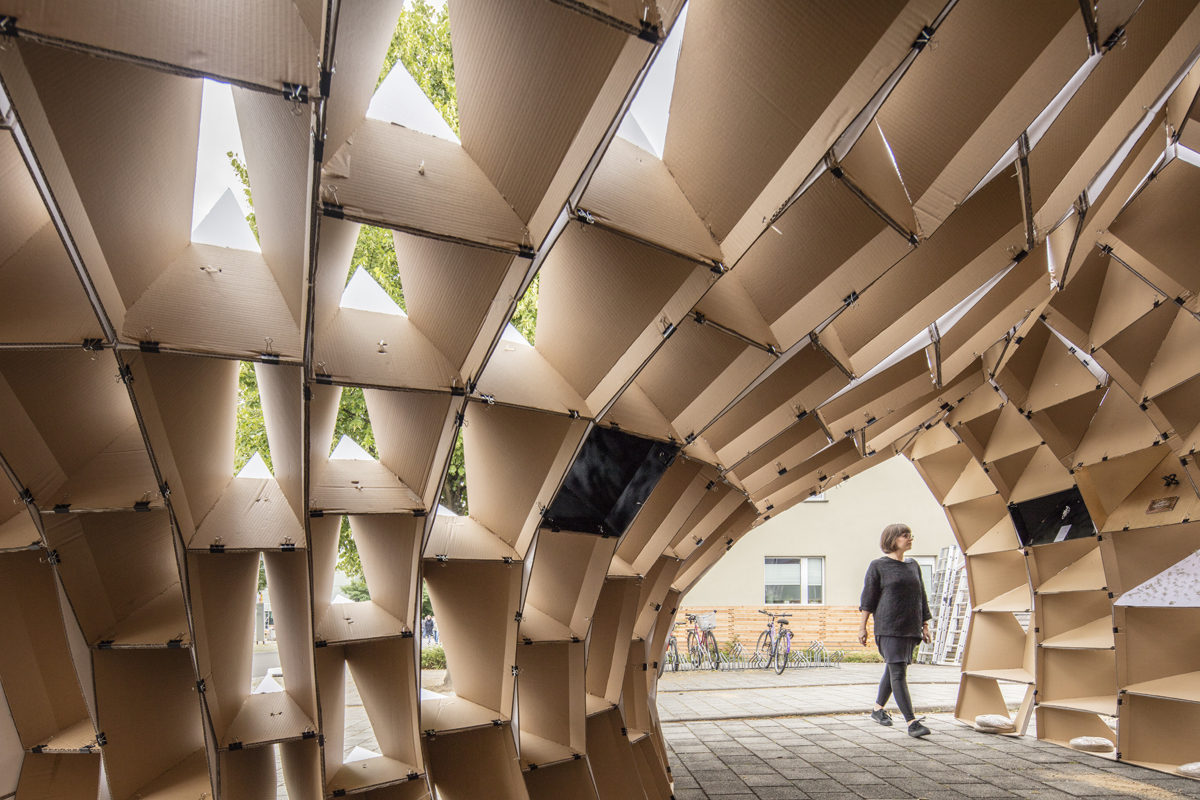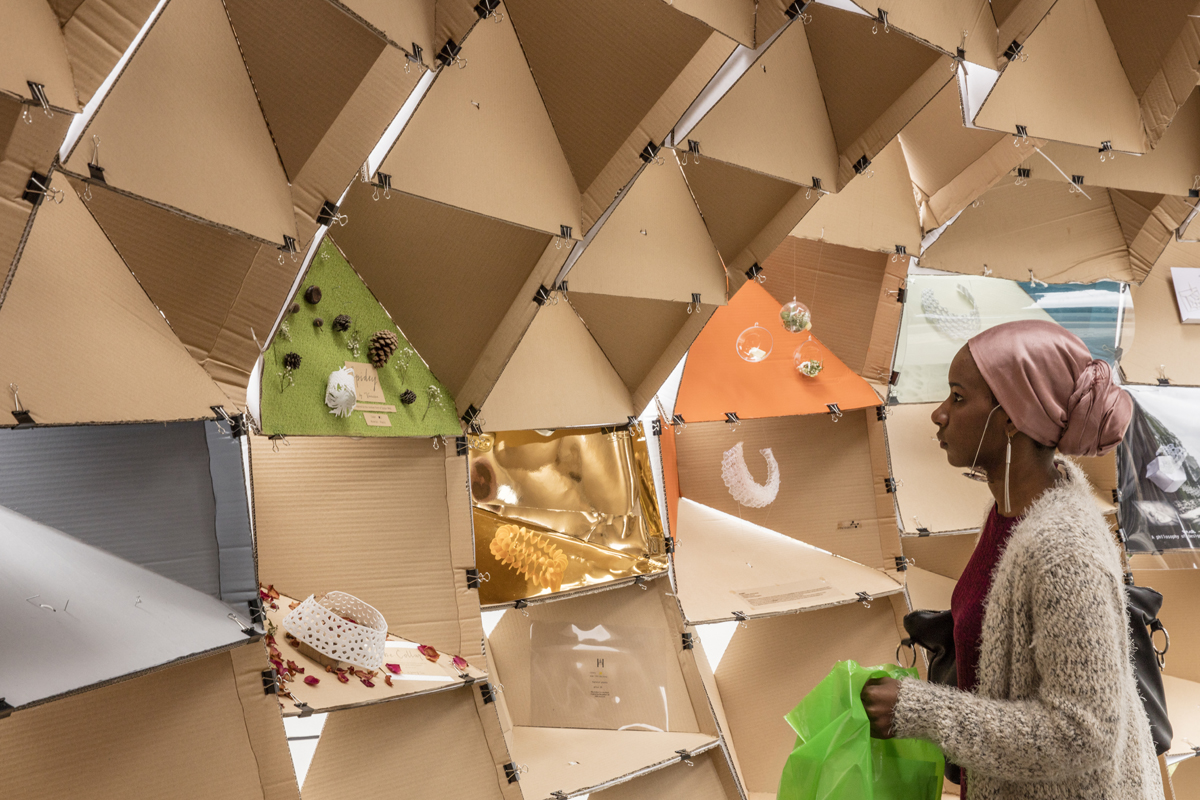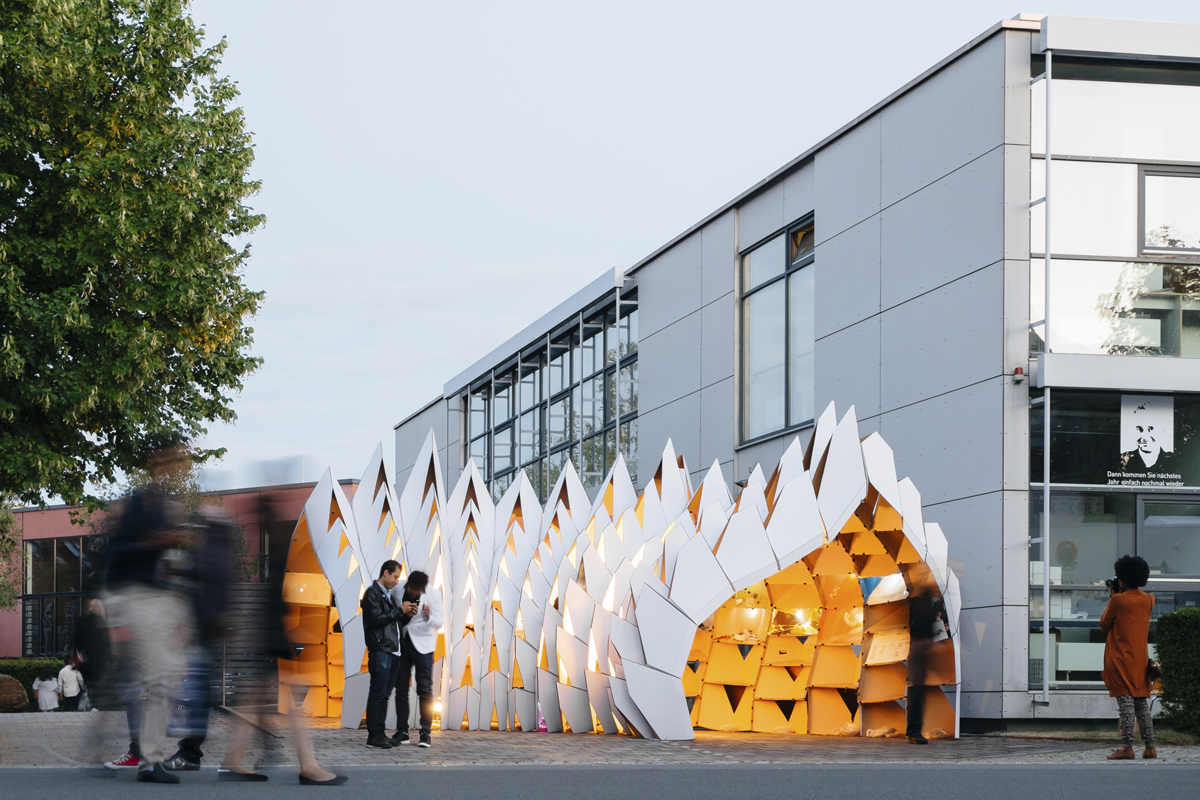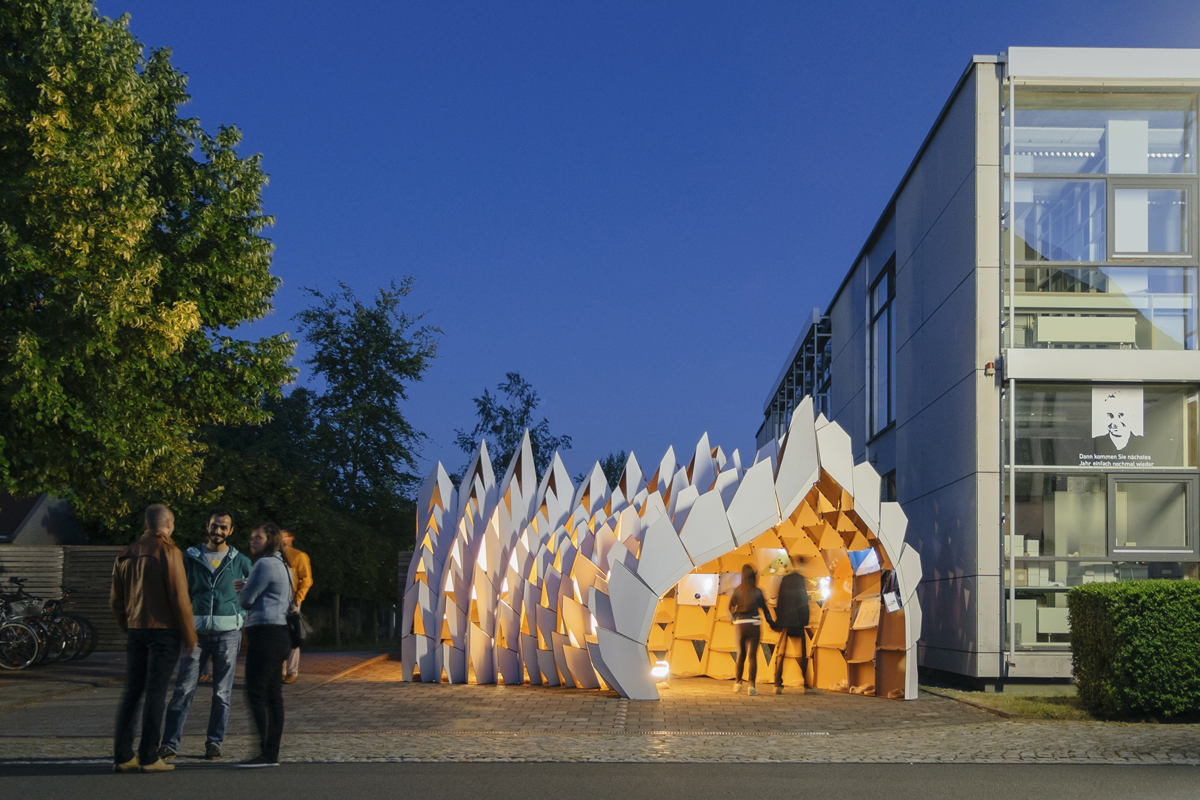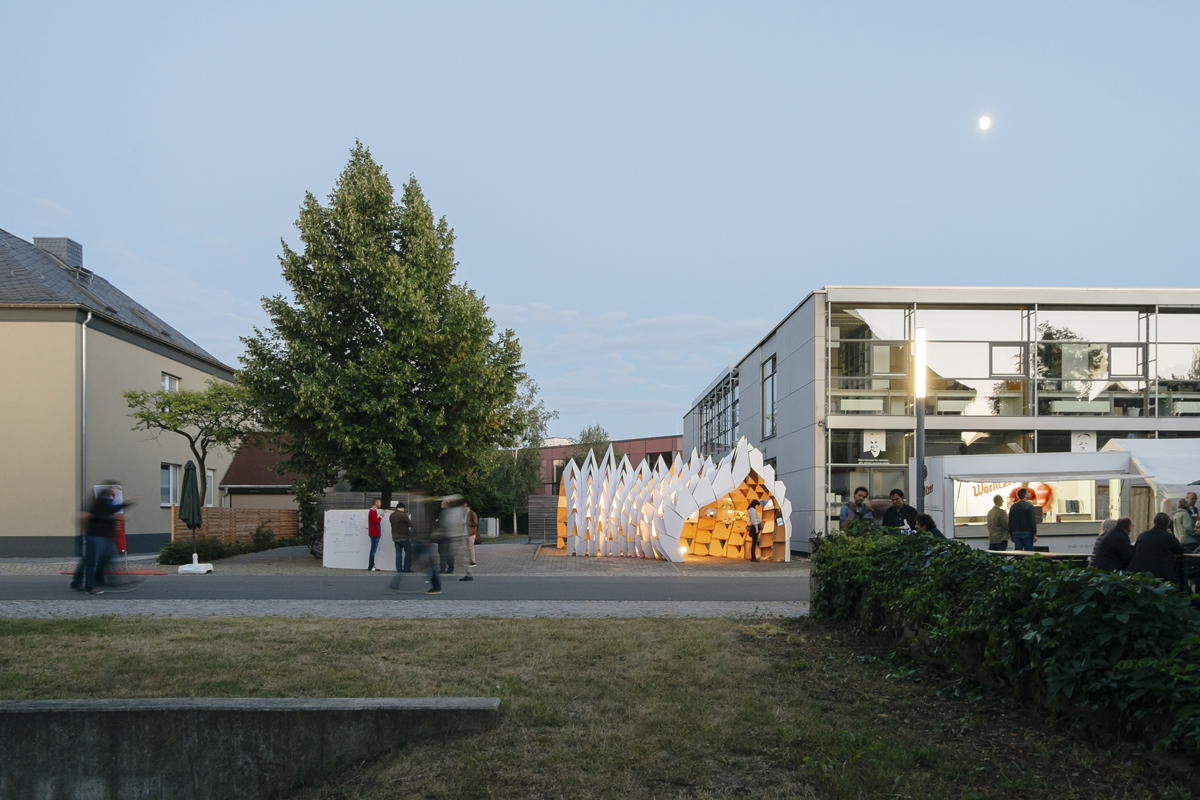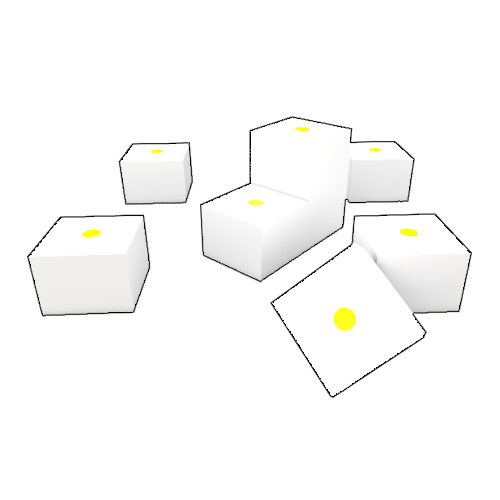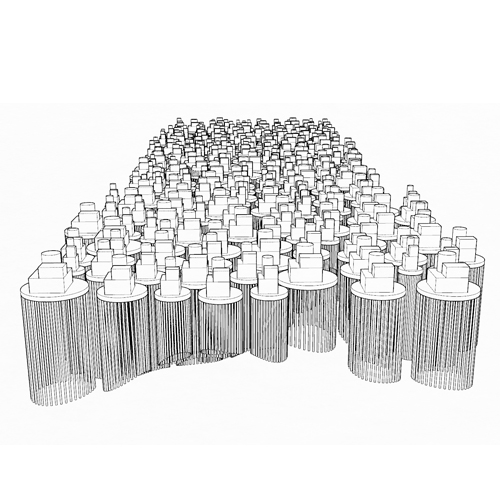Project Data
Type: Temporary Exhibition – Digital Fabrication
Location: Dessau, Germany
Client: Hochschule Anhalt
Year: 2016
Budget: 2 000 Euro
Project Director: Karim Soliman
Design Team: OrlenRamzoti, Nabil Rajjoub & IlyaSafronov
Construction Team: Luis Alberto, Chan Hon Yoon, Minjeong Kang, John Barry Gimutao, Ryan Gustafson, Alina Safiullina, Gabriel Traknyak, Hanna Maksymenko, Elena Shepeleva, Juan Pablo Lee Becerra, Tugce kurucay, Blanca Tovar, Ali Shujaat Naqvi, Zachary Wilson, Khai Wei Tan, Anjali Ramachandran, Larissa Krannich, Anastasija Palagina, Nathan Ashton, Arian Sefiu, Gulce kurucay, Bardhil Kasami, Ka Ki Lam & Teya Koleva
Photo Copyrights: Laurian Ghinitoiu & Pavel Babienko
Timelapse: Mohamed Abdelmonem
Movie Credit: Mohamed Eid
Project Description:
‘DIA 3D-Jewelry pavilion’ is a low cost cardboard pavilion parametrically designed to exhibit 20 sets of 3d Printed prototypes jewelry. Printed in plastic. The fabrication process was manually cutting and assembling 215 A0 cardboard sheets to create 215 un-identical components which are the pavilion build from.
The construction process of the ‘DIA 3D-Jewelry pavilion’ was part of CAD logic course in (DIA)Dessau International Architecture Graduate School. The aim was to build a pavilion that would exhibit 20 pieces of 3d-printed jewelry which are designed by student of the same course.
The pavilion should be a low cost temporary self-standing structure that can be easily assembled and disassembled,it is designed exhibit the jewelry in the annually campus festival in Dessau
The biggest challenge presented during the conception phase was to bring together two opposing scales. The idea of a pavilion in the main campus street seek large scale for attraction and on the other hand the jewelry exhibition seek a dramatic reduction of it. It was obvious that the pavilion would speak of a certain duality that shows an inviting and exiting character from the exterior and immediately changes once you are inside, providing a sense of seclusion and intimacy.
The materials that were used consist of 215 sheets of 6mm thick cardboard, and for the joint we used plastic zip ties and clippers.
The assembling process was covered in three hours and revealed the most exciting part of the process, where after two exhausting days everything immediately took a sense of “digital” precision.

